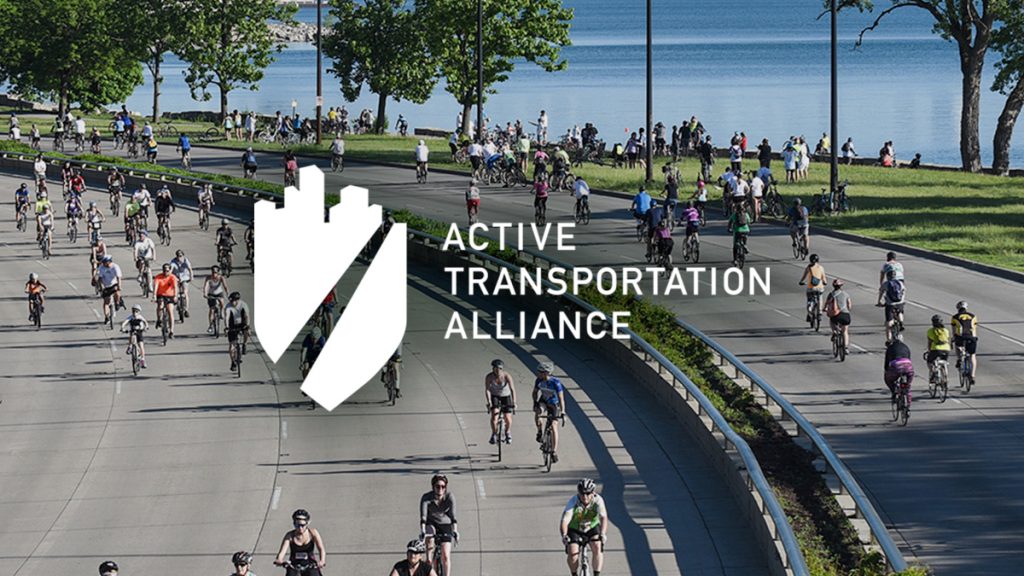For immediate release
April 20, 2015
Media Contact:
Ted Villaire
Active Transportation Alliance
Communications Director
O: (312) 216-0484
C: (312) 563-1118
[email protected]
New analysis shows nearly 5 children are hit by cars every day in Illinois while walking or biking within one block of a school
Action needed to address unsafe streets near schools
According to a new analysis by the Active Transportation Alliance, a child was hit by a vehicle on average every five hours while traveling by foot or on bike within one block of a school in Illinois — that’s nearly five children every day, accounting for 54 percent of all crashes involving youth who are walking and biking in Illinois.
In response, Active Transportation Alliance and a coalition of organizations today launched the Safe Routes to School (SRTS) Campaign that seeks to pass legislation that will increase funding for Illinois’ SRTS grant program and reduce administrative hurdles to applying for grants. In addition, low-income communities that generally experience higher rates of traffic crashes would be prioritized. Active Trans found that, in the most recent round of state SRTS grants, high-need/low-income communities were significantly less likely to receive grants than other communities.
“Our kids deserve safe spaces for walking and biking, but too few communities currently provide them,” said Ron Burke, executive director of Active Transportation Alliance. “These crashes are preventable with the right safety strategies.”
Walking and biking to school was a safe, everyday activity for kids in the United States prior to the 1970s, but in recent decades walking and biking rates to school have declined precipitously. Half of school children walked or biked to school in 1969, but only 13 percent reported doing so in 2009, according to the National Center for Safe Routes to School. This decline is the result of many factors, including nonexistent crosswalks, heavy and fast-moving traffic, and broken or absent sidewalks.
Between 2006 and 2012, vehicles hit nearly 19,000 children who were walking or biking in Illinois, and 54 percent of those children — more than 10,000 — were hit within one block of a school. On average, that means vehicles hit nearly five children each day within one block of a school. Active Trans said that a comprehensive “Vision Zero” strategy — including enforcement of traffic laws, public awareness and education programs, policy changes, and improvements to traffic engineering and street design — is needed at the state and local levels to consistently reduce traffic crashes and ultimately eliminate traffic fatalities. A key Vision Zero strategy is the state’s Safe Routes to School grant program.
The SRTS program in Illinois is federally funded and implemented by the Illinois Department of Transportation (IDOT). This program has been supporting walking and biking infrastructure improvements and educational projects since 2005, providing communities across the state with valuable resources that can improve the safety of walking and biking to school for children.
Heidi Gonzalez, a Village of Monee Trustee, applied for Safe Routes to School funding in 2008 for the Monee Elementary School in Monee, Illinois. At the time Gonzalez was not a Trustee, but a community liaison for the school and was concerned about a new subdivision that was built close by with no sidewalk connected to the school. “Kids were walking to school in the ditch, and if it wasn’t possible to walk in the ditch due to rain they walked in the street,” says Gonzalez. Concern for student safety and high busing costs to drive kids less than one mile to school prompted Gonzalez’s group, with the help of local engineers, to apply for Safe Routes to School funding that would help construct a sidewalk that would join the school and the subdivision. After receiving project approval and funding from IDOT, the sidewalk project was successfully completed within the same school year of receiving funding. “Kids now have the opportunity to walk or bike to school as opposed to walking along a hazardous route or being bused a very short distance,” explained Gonzalez.
This is just one example of how Safe Routes to School funding can effectively increase biking and walking safety in communities across Illinois.
The pool of Safe Routes to School grant money has only been enough to fund a small percentage of schools, and recent federal funding cuts have exacerbated the problem. In addition, administrative hurdles deter some schools and towns from applying, especially low-income communities that lack the staff resources to apply.
Support for improving the program comes from all over the state. “Ensuring that our kids can actively and safely get to school is an issue we must address collectively,” said the Illinois Alliance to Prevent Obesity’s Executive Director, Elissa Bassler.
Sign on to the campaign and find out how you can support the effort to improve Safe Routes to School in Illinois by visiting http://activetrans.org/safe-routes or contacting Erin McMillan, [email protected], at the Active Transportation Alliance.
# # #
The Active Transportation Alliance is a non-profit, member-based advocacy organization that works to make bicycling, walking and public transit so safe, convenient and fun that we will achieve a significant shift from environmentally harmful, sedentary travel to clean, active travel. The organization builds a movement around active transportation, encourages physical activity, increases safety and builds a world-class transportation network. Formerly the Chicagoland Bicycle Federation, the Active Transportation Alliance is supported by more than 7,000 members and 1,000 volunteers. For more information about the Active Transportation Alliance, visit www.activetrans.org or call 312.427.3325.

